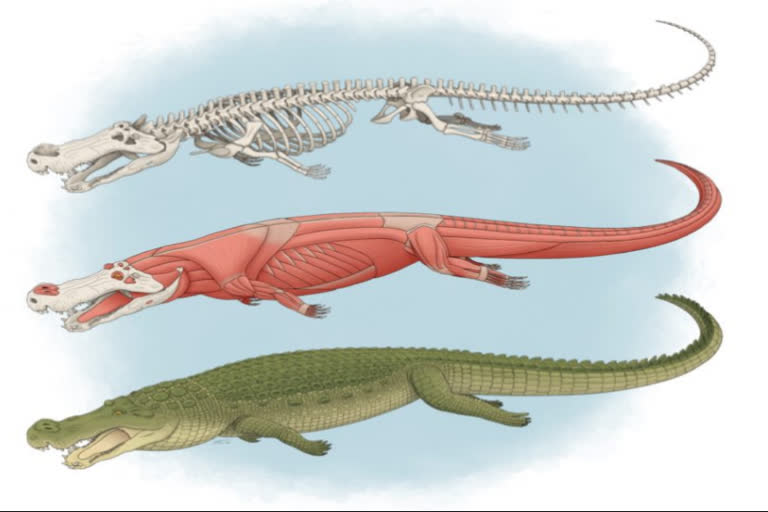New Delhi:A new study, revisiting the fossil specimens from the enormous crocodylian, Deinosuchus, has confirmed that the beast had teeth "the size of bananas", which were even capable to take down even the very largest of dinosaurs.
The research, published in the Journal of Vertebrate Paleontology, has revealed the various kinds of "terror crocodile". Two species, entitled Deinosuchus hatcheri and Deinosuchus riograndensis lived in the west of America, ranging from Montana to northern Mexico and another, Deinosuchus schwimmeri, lived along the Atlantic coastal plain from New Jersey to Mississippi. At the time, North America was cut in half by a shallow sea extending from the Arctic Ocean south to the present-day Gulf of Mexico.
Also Read: Powerful human-like hands create safer human-robotics interaction
Ranging in up to 33 feet in length Deinosuchus, though, has been known to be one of the largest, crocodylian genera ever in existence and it was the largest predator in its ecosystem, outweighing even the largest predatory dinosaurs living alongside them between 75- 82 million years ago.
Dr Adam Cossette from the New York Institute of Technology College of Osteopathic Medicine at Arkansas State University sheds new light on the monstrous creature and has further confirmed that z most certainly had the head size and crushing jaw strength to do just that. He says, "Deinosuchus was a giant that must have terrorized dinosaurs that came to the water's edge to drink and until now, the complete animal was unknown. These new specimens we've examined reveal a bizarre, monstrous predator with teeth the size of bananas."
Also Read: M.S. Swaminathan, known as 'The Father of Green Revolution'
Co-author Stephanie Drumheller-Horton, a palaeontologist at the University of Tennessee, further added that “Deinosuchus seems to have been an opportunistic predator, and given that it was so enormous, almost everything in its habitat was on the menu. We actually have multiple examples of bite marks made by D. riograndensis and a species newly described in this study, D. Schwimmer, on turtle shells and dinosaur bones."
